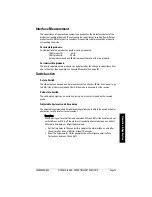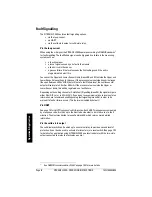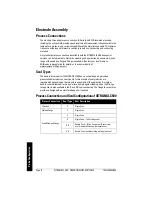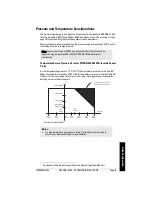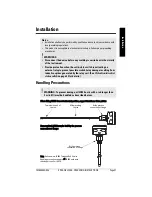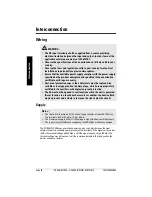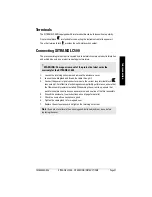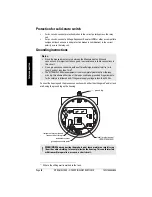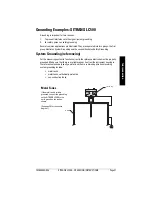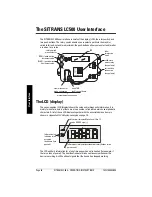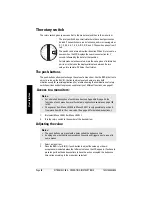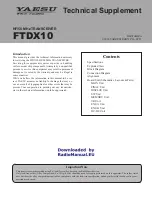
7ML19985GE04
SITRANS LC500 – OPERATING INSTRUCTIONS
Page 25
Int
e
rc
on
nect
ion
Examples:
•
With a 250 Ohm sensing resistor, no barrier and negligible cable resistance, the
overall supply voltage should be at least 15.0 V.
•
With a 250 Ohm sensing resistor, a barrier of 280 Ohm, and 20 Ohm cable
resistance (500 m), the total resistance is 550 Ohm, so the overall supply voltage
should be at least 20.5 Volts.
•
For a multi-drop application, where the measuring supply is fixed to 4 mA, the
voltage on the terminals of the SITRANS LC500 should be at least 12 Volts.
The loop circuit is completely isolated from the measurement circuit. It is designed so that
the internal capacitance and inductance on the terminals are isolated and do not factor
in safety calculations.
Cable
Selecting the correct instrumentation cable
•
you need to know the cable length and the measurement resistance
•
select a cable that will give you a capacitance time constant of less than 65
μ
Sec
Notes:
•
To maintain reliable transfer of the HART modem signals, the RC
1
time constant of
the connections should be less than 65
μ
Sec. .
•
For output signals (from the SITRANS LC500), only the cable and barrier
resistance are relevant. For input signals the measurement resistance is also
relevant.
•
Use twisted pair cable, screened as a pair.
2
1.
RC = Resistance x Capacitance
2.
Or, if you use a common screen over a cable containing multiple twisted pairs,
do not use other pairs for signals that could interfere with HART signals.
Voltage drop versus mA for current transmitter operation
mA
V
-su
ppl
y
voltage drop over 250 ohm
measuring resistance
voltage drop over 280 ohm in
barrier
voltage drop over blocking
diode in barrier
margin or voltage drop over
instrument cable
operation voltage,
transmitter





